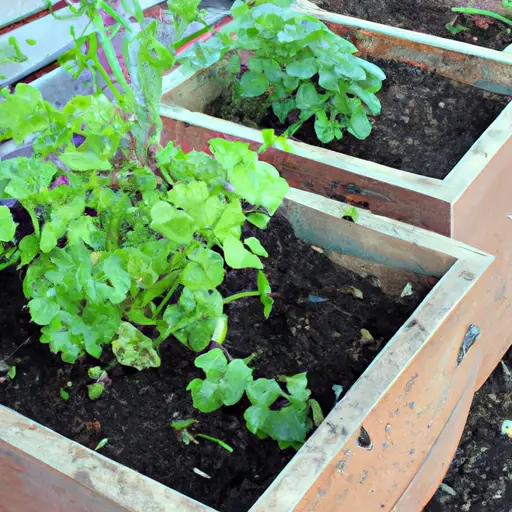Unraveling the Secrets of Successful Container Vegetable Gardening
Container vegetable gardening is a popular and practical way to grow your own fresh produce, no matter how limited your space may be. Whether you have a small balcony, a rooftop, or just a tiny backyard, container gardening allows you to cultivate a wide variety of vegetables and enjoy the pleasures of homegrown food. However, like any form of gardening, container vegetable gardening has its own set of challenges. In this article, we will unravel the secrets of successful container vegetable gardening and provide you with all the tips and tricks you need to create your very own thriving vegetable garden.
1. Selecting the Right Container
Choosing the appropriate containers for your vegetables is crucial for their growth and productivity. The container should have sufficient depth to accommodate the root system and allow healthy growth. Ideally, containers should be at least 12-18 inches deep for most vegetables. Additionally, ensure that each container has adequate drainage holes to prevent waterlogging.
2. Picking the Right Soil
The success of your container vegetable garden largely depends on the quality of the soil you use. Opt for a high-quality potting mix that is well-draining and nutrient-rich. Avoid using garden soil as it tends to become compacted in containers, hindering root growth and water drainage. A good potting mix should provide adequate moisture retention while also allowing excess water to drain away.
3. Choosing the Right Vegetables
Not all vegetables are suitable for container gardening due to their size or growing habits. Focus on compact and dwarf varieties that are specifically bred for containers such as tomatoes (dwarf cherry tomatoes), lettuce (leafy greens), radishes (round varieties), peppers (mini bell peppers), or herbs like basil and parsley. These vegetables take up less space and thrive in containers.
4. Providing Adequate Sunlight
Most vegetable plants require at least six hours of direct sunlight daily for optimal growth and productivity. Place your containers in the sunniest spot available, be it a balcony, patio, or windowsill. If your space lacks adequate sunlight, consider investing in full-spectrum grow lights to supplement the natural light.
5. Watering Properly
Regular and proper watering is essential for container vegetable gardening. Containers tend to dry out quickly, especially during hot summer months. Check the moisture level of the soil by sticking your finger about an inch deep into the soil. If it feels dry, it’s time to water. Avoid overwatering as it can lead to root rot and other diseases. Water until you see water draining from the bottom of the container but ensure that excess water does not accumulate.
6. Fertilizing Strategies
Container vegetables require regular fertilization as nutrients in potting mixes are quickly depleted. Use a balanced, slow-release organic fertilizer or liquid fertilizer every two to three weeks during the growing season to provide essential nutrients for healthy plant growth.
7. Managing Pests and Diseases
Even in a controlled environment like containers, pests and diseases can still pose a threat to your vegetable plants. Inspect your plants regularly for signs of pests such as aphids or caterpillars and use organic pest control methods if necessary. Neem oil or insecticidal soaps are effective against many common pests while being safe for both plants and humans.
8. Staking and Supporting Plants
Some vegetable plants require support to grow upright and prevent them from bending or breaking under their own weight. Install stakes or trellises early on in the growth stage to provide support for climbing vegetables such as tomatoes, cucumbers, or beans.
9. Harvesting at the Right Time
Each vegetable has its own optimal harvesting time based on size, color, texture, and flavor. Research each variety you are growing to determine when it is ready to be harvested for best taste and quality.
10. Rotating Crops
To avoid depleting the soil of its nutrients and reducing the risk of diseases, practice crop rotation in your containers. Rotate plants in different containers or swap them between seasons to maintain soil health and plant vitality.
Container vegetable gardening offers a rewarding way to grow your own food and enjoy the satisfaction of harvesting fresh produce. By following these secrets, you’ll be well on your way to creating a thriving container vegetable garden, regardless of the space available to you. Happy gardening!














